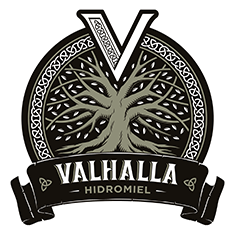- News
- 0 likes
- 33763 views
- 0 comments
- mead, vikings, Viking diet
It cannot be denied that nowadays there is an interesting variety of diets with which we try to achieve very different objectives.
We will avoid mentioning those diets that lack full scientific value and that, beyond filling the current accounts of their creators, lead their followers to accumulate nutrient deficiencies and not a few metabolic imbalances.
We will briefly mention some that can be found without much difficulty, such as the meticulous measurement of macronutrients, the "paleo" diet, the vegan diet, the ovolacteovegetariana, etc., and we will focus somewhat more on the diet of the Viking, or Nordic diet, whose similarities with the Mediterranean diet have made it worthy of a recent review by the World Health Organization (WHO).
Yes, as you've read.
The Viking diet is no more and no less than that which compiles the food consumed during the historical period in which the Scandinavian people left their mark on Europe.
Many people who feel a special attachment to this era and to the Viking people choose not only to emulate their most prominent figures in their appearance, adopting a physical image according to the times they adore, but also in drinking, consuming the famous mead drink that from our factory we strive to value and ponder as it deserves.
These new urban tribes go one step further and seek to resemble these Germanic peoples as much as possible, and although they do not accept new food customs for themselves, they are particularly curious to know how they cooked and consumed everything that was raised and cultivated in the immediate vicinity during the Viking period.
Whether we like more or less the type of Viking food, whether or not we commune with their customs, there is an admirable and remarkable fact of all our ancestors, and is to make the local product its main source of consumption.
They attached special importance to everything seasonal, obvious if we consider that the majority were dedicated to the cultivation of the land and that the method of recreating specific environmental conditions to obtain agricultural productions out of their natural cycle was not known (as it does nowadays with the nurseries).
On the other hand, they gave maximum prominence to the consumption of meat, since the raising of livestock was also a majority activity among the less wealthy classes.
The meat consumed also came from hunting.
It was necessary to make abundant and caloric stews, since the climates were less indulgent, and the working days extended from dawn until the sun set on the horizon.
It is not difficult to guess that, at that time, food was consumed mostly raw (fruits and vegetables), and that no cooking methods were known beyond the cauldron over a generous fire, to which the meat of the livestock itself but also that of hunting were cooked.
Food Pyramid of the Viking People
If we were to subject the type of food of the Viking people to a classification as the food pyramid that we know today, we would observe that at the base of the whole structure would be the cereals, always integral.
The grain was consumed whole, since the way of separating the germ from the bran and the endosperm was not known.
There was also a high consumption of red fruits and vegetables, fish (mainly blue) and also red meats, the latter far above white meats. This would be on the next two steps of the hypothetical pyramid.
Protein sources also came from the consumption of milk and eggs.
The cooking fats came from rapeseed oil, quite the opposite of the Mediterranean diet in which olive oil has a strong presence.
There was an important consumption of honey, an energy source par excellence, necessary to withstand low temperatures, although it was not a daily food.
It's not strange to understand why mead became so popular.
Butter was also well used to add flavour and colour to roasted meat pieces.
These last two elements would be placed on top of the entire pyramid.
The Viking diet does not differ much from our Mediterranean diet, with some deficiencies such as olive oil, but unquestionable points in favor as the consumption of whole grains, custom that today we begin to recover, and fresh fruits and vegetables and seasonal.
We wanted to bring you a little closer to the life of the Viking people and we hope to have resolved some of your doubts about what was eaten and how it was cooked.
If you want to add something else, please feel free to share it with us in the comments.
Cheers!

Comments (0)